The Ever-Changing Ideals of Beauty
How Standards Have Shifted Over Time

Introduction
Beauty standards refer to society's collective notion of what physical features are considered aesthetically pleasing and desirable at a certain point in time. These standards have a powerful influence on people's perceptions and can shape ideals of beauty across large populations.
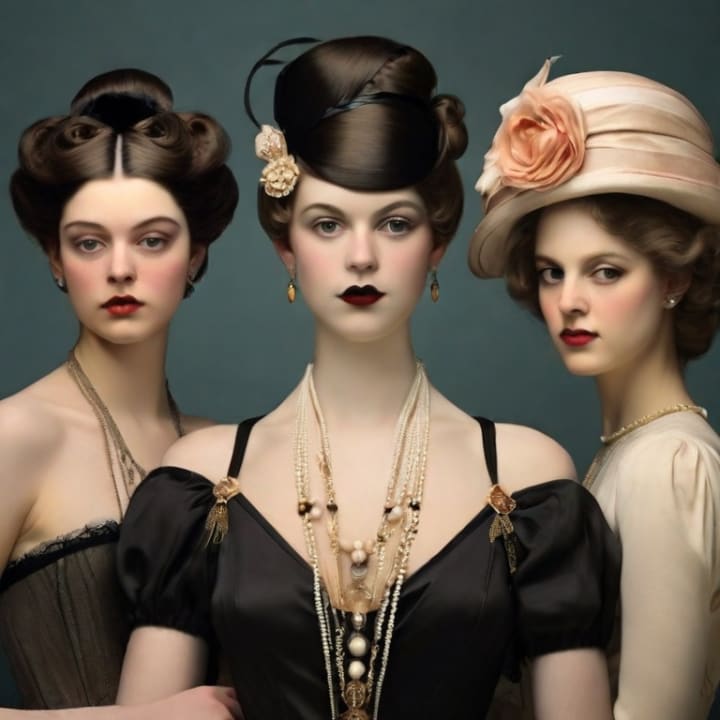
However, beauty standards are not static - they fluctuate over time and across cultures. What may be viewed as attractive in one era can differ drastically from what is considered beautiful just a few decades later. For instance, voluptuous, full-figured bodies were prized in the early 17th century, while thin, androgynous shapes were seen as ideal in the 1920s.
Over the centuries, society's shifting beauty standards have reflected the culture and values of the time. Fashions, conflicts, economic conditions, role models, and commercial interests have all contributed to these changes in what defines beauty and physical perfection.
This content will explore how beauty standards in Western cultures have evolved dramatically from the early 20th century to today. We'll see how everything from women's ideal body shapes, hairstyles, fashion trends and makeup styles have transformed in response to broader societal shifts as well as emerging celebrity looks. From the pin-up girls of the 1950s to the rise of supermodels in the 80s, each era has produced distinct beauty ideals that reveal the larger cultural zeitgeist of the time.
Beauty Standards in the Early 20th Century

In the early 20th century, beauty standards for women in the Western world were shifting away from the fuller curvier figures of the Victorian and Edwardian eras towards a thinner, more androgynous shape. This change was largely embodied in the emergence of the flapper look in the 1920s, which celebrated a slim, flat-chested silhouette and boyish figures.
Flappers wore loose, drop-waisted dresses and bobbed haircuts, binding their breasts to appear as flat-chested as possible. Makeup, especially around the eyes, was used to create a bolder, more youthful look. Having a tan was fashionable, as pale skin was associated with the restrictive indoor lifestyles of previous generations. The flapper rejected the constraining fashions of decades past and opted for loose, comfortable clothing that allowed her to dance, play sports, drive cars, and participate in active public life.
While fuller figures were still admired in some circles, the prevailing ideal was a thin, almost adolescent physique for white women. Slenderness was associated with modernity, youth, independence, and an energetic lifestyle. The flat-chested, straight silhouette was a reaction against the S-bend corseted figures of the early 1900s. Though not all women embodied the flapper aesthetic, it had an enormous influence on shifting beauty standards away from voluptuous shapes towards the streamlined, slim figures that would come to dominate fashion in subsequent decades.
1930s-1940s Hollywood Glamour
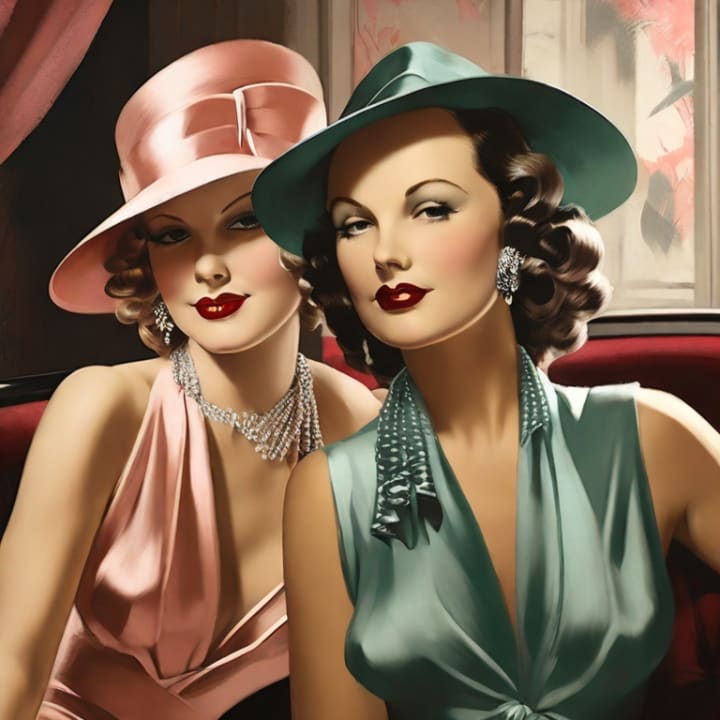
The 1930s and 1940s were defined by Hollywood glamour, with actresses like Marlene Dietrich, Greta Garbo, and Jean Harlow becoming style icons. Fashion embodied luxury, femininity, and old Hollywood mystique.
Gowns were often made of satin or silk with lavish details like fur, sequins, or feathers. Evening dresses had low backs and bias cuts that hugged the body. Makeup was dramatic, with dark red lips and strong cat-eye makeup.
Hairstyles were also decadent. Finger waves and pin curls were arranged in elaborate, sculptural styles. Veronica Lake's peekaboo hairstyle with a sideswept bang became iconic. Hair was curled, waved, and styled into upswept dos for a polished finish.
The Hollywood glamour aesthetic was indulgent and elegant. It celebrated sensuality and sophistication through luxe fabrics, striking makeup, and ornate hairstyling. Dietrich, Garbo, and Harlow embodied this look on and off screen, influencing generations of beauty and fashion.
1950s Pin-up Girls

The 1950s marked the rise of pin-up models and curvier body types as the beauty ideal. Pin-up girls were widely featured in men's magazines and calendars, often photographed in alluring or playful poses. Unlike the ultra-thin flappers of the 1920s, the pin-up look emphasized a fuller bust, nipped waist, and curvy hips.
Iconic pin-up models like Bettie Page, Marilyn Monroe, and Jayne Mansfield embodied this desired silhouette. Their figures were enhanced by bullet bras, tight corsets and girdles to accentuate the bust and hips. Dramatic winged eyeliner and red lipstick completed the sultry, femme fatale look.
This shift reflected post-war values of traditional femininity, celebrating curves and a more sensual aesthetic. The popularity of pin-ups also coincided with the rise of lad mags and male-oriented entertainment. While restrictive by today's standards, the bold, sexualized pin-up look marked a departure from the boyish silhouettes that dominated previous decades.
1960s Twiggy and Mod

The 1960s ushered in radical cultural changes that were reflected in shifting beauty ideals, especially for women. Ultra-skinny British model Twiggy became the poster child for the fashion and aesthetic of the era. Her extremely thin, boyish figure exemplified the androgynous mod style that emerged in London and swept across Europe and the US.
Twiggy weighed only 91 pounds at 5 feet 7 inches tall. Her tiny frame, dramatic cheekbones, doe eyes, and pixie haircut gave her an elfin, childlike appearance that stood in stark contrast to the voluptuous curves favored in previous decades. Vogue declared 1966 as "The Year of Twiggy" as she rose to international fame.
As youth culture and mini skirts became ubiquitous in the 60s, the pressure for women to achieve extreme thinness intensified. Having a very slender, flat and curveless silhouette was prized, and Twiggy's body type became the beauty ideal. Heavy makeup gave way to a more natural, minimalist look with little eye makeup.
This marked a dramatic shift away from the hourglass pinup shape of the 1950s. The mod culture favored an androgynous, waifish shape for women. As the unisex styles and fashions of the 60s challenged gender norms, beauty ideals also became more gender neutral. Thinness and a more boyish figure were in vogue.
1970s Disco and Punk
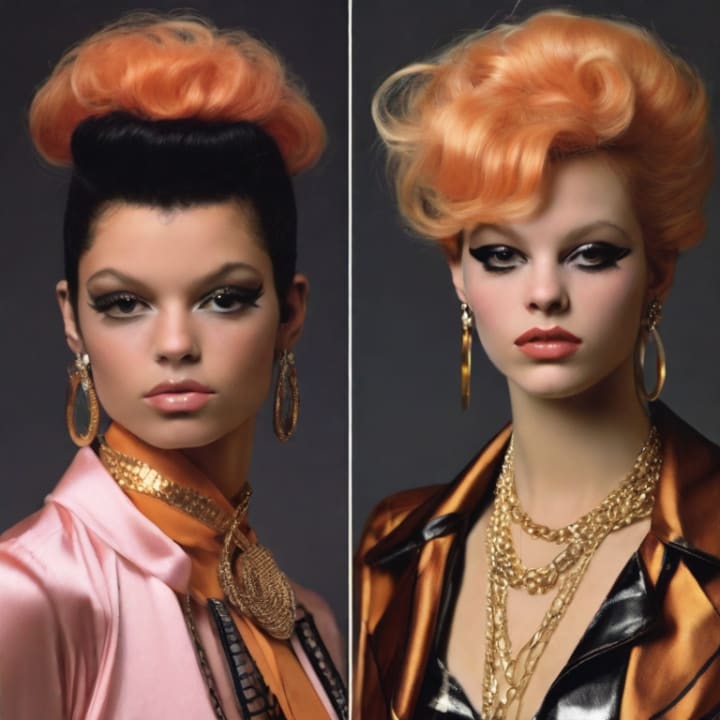
The 1970s saw two distinct and opposing beauty ideals emerge: disco glamour versus punk nonconformity. On one end of the spectrum was the rise of disco music and culture, which emphasized a sexy, athletic look for both men and women. Tanned skin, especially with bronzer, became increasingly popular as it conveyed an image of leisure and beach vacations. Women strived for the "Farrah Fawcett" look, with feathered hair, glowing skin, and tight clothes that showed off a fit, toned body.
In stark contrast, the punk movement rejected mainstream beauty standards entirely. Punk style involved choppy, asymmetrical hairstyles colored with unnatural hues, dark makeup, ripped clothes held together with safety pins, and provocative slogans that went against the establishment. Punks sought a rebellious, avant-garde aesthetic as a form of cultural protest and self-expression. Their nonconformist look openly challenged and opposed the artifice of disco glamour. While disco embraced traditional femininity and athletic machismo, punks thumbed their noses at gender norms and ideals of beauty.
1980s Supermodels

The 1980s marked the rise of the supermodel in fashion and beauty. Women like Cindy Crawford, Naomi Campbell, Christy Turlington, and Linda Evangelista came to dominate runways and fashion magazines with their tall, athletic figures and bold makeup looks.
Gone were the thin, androgynous bodies of the previous decade. The 80s supermodel had wide shoulders, slim hips, and strong, toned legs. This Amazonian physique was seen as the feminine ideal. Designers increasingly chose models that looked both athletic and curvaceous.
Makeup in the 80s also became bolder and more striking. Blush was applied heavily on the cheeks. Lips were lined dramatically and filled in with bright, matte lipsticks. Eyes were rimmed with thick black eyeliner and voluminous mascara. The supermodels exemplified a more glamorous beauty aesthetic that continued into the early 90s.
Some have argued the rise in athletic body types expanded Eurocentric beauty standards into a celebration of health and fitness ideals. Others counter it continued upholding unrealistic, unattainable beauty goals for most women. Regardless, the 80s supermodel look had an enduring influence on beauty and fashion.
1990s Heroin Chic
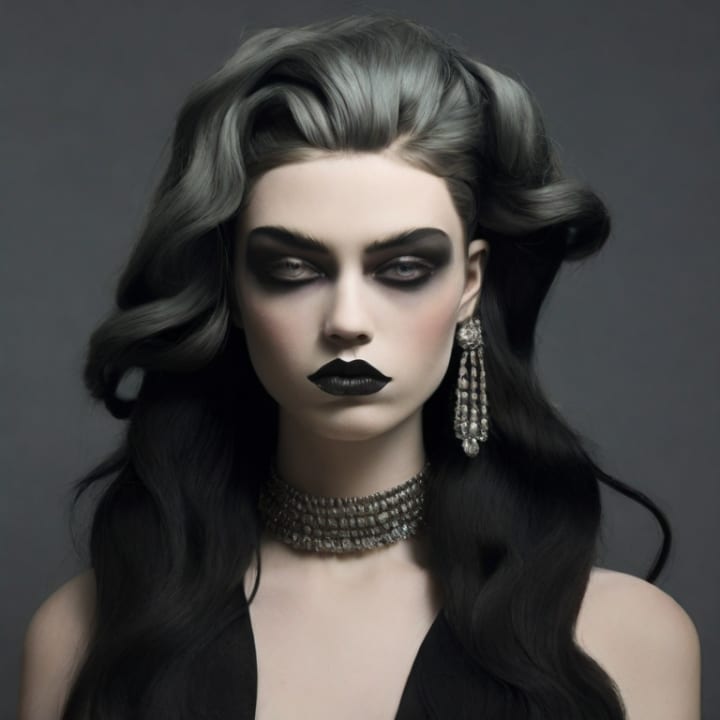
The 1990s brought a dramatic shift in beauty standards as the era of the supermodel came to an end and "heroin chic" became the controversial new look. This new aesthetic was characterized by an extremely thin, androgynous and waifish frame along with pale skin and dark circles under the eyes.
Fashion photographers like Corinne Day and Juergen Teller pioneered the gritty, raw photography style of heroin chic using models like Kate Moss. The look was a rejection of the healthy and vibrant appearance of 1980s supermodels like Cindy Crawford and Naomi Campbell.
Heroin chic models had a gaunt, hollow and emaciated appearance that resembled heroin addicts. The look glorified dark, depressing and taboo themes. Fashion in the 90s moved away from bold, bright colors and embraced darker muted tones like greys, blacks and browns.
Grunge music and culture also influenced the nihilistic mood of 90s beauty and fashion. Musicians like Kurt Cobain became unlikely fashion influencers as their real and unpolished style spread into mainstream culture.
The controversy around heroin chic's promotion of a drug addicted and unhealthy appearance sparked much debate and ethical concerns. However, its projection of thin white bodies as the ideal also faced heavy criticism for lack of diversity. Regardless, heroin chic left a lasting mark on fashion and continues to shape certain aspects of beauty standards today.
2000s-Today: Rise of Social Media
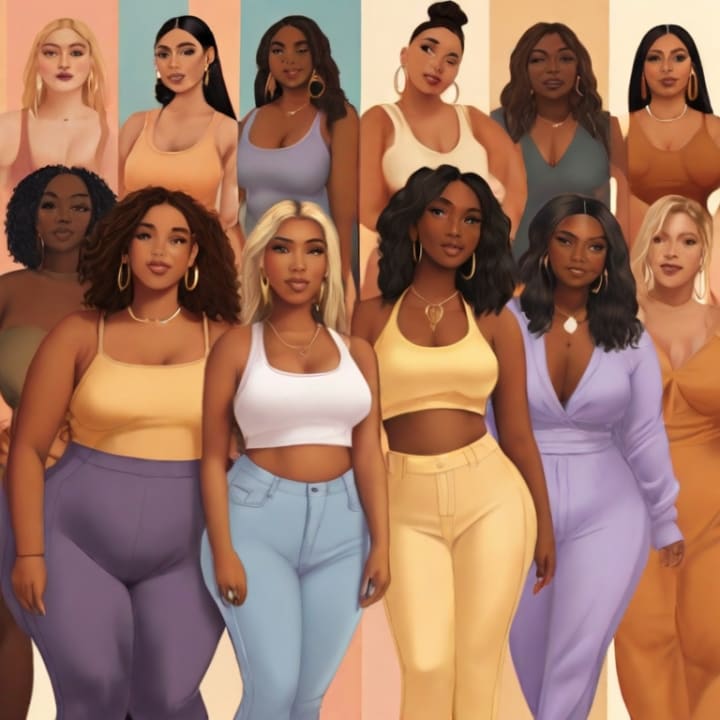
The 2000s brought the rise of social media platforms like MySpace, Facebook, and YouTube, allowing everyday people to share photos and videos and gain large followings online. This democratization of media challenged the monopoly traditional fashion magazines and Hollywood had in defining beauty ideals.
With social media, people of all body types, ages, races, and genders gained visibility and influence. Diverse beauty began to be celebrated, from full-figured models like Ashley Graham to androgynous stars like Jonathan Van Ness. "Influencer marketing" allowed those with strong online followings to partner with brands.
The body positivity movement also rose to prominence in the 2000s and 2010s, empowering people to appreciate their bodies as they are. Activists and everyday social media users promoted self-love and embraced diverse body types, skin colors, ages, disabilities, and more.
While narrow beauty standards certainly still exist today, the rise of social media opened the door for more varied, inclusive definitions of beauty to gain traction. Rather than a single ideal pushed by fashion gatekeepers, beauty today encompasses a spectrum of body types, styles, and identities.
Conclusion

Beauty standards have constantly evolved throughout the 20th century into today. From the fuller figures of the 1930s and 40s to the rail-thin models of the 90s, our perception of beauty has changed dramatically based on cultural trends and celebrity influence. While the media plays a major role in setting beauty ideals, it's important for women to find self-acceptance and inner confidence instead of conforming to unrealistic expectations.
The most damaging beauty standards, like heroin chic in the 90s, can lead to body image issues and disorders like anorexia. Social media today also propagates filtered and Photoshopped versions of beauty. But the diversity of images online is helping shift perceptions of beauty to be more inclusive of different body types, ethnicities, and styles. Rather than compare themselves to others, women should focus on their health, happiness, and natural beauty.
Despite the evolution of beauty trends, self-love remains timeless. Embracing our unique attributes and rejecting toxic ideals of physical perfection allow us to be comfortable in our skin. Inner beauty and self-confidence will always be more important than meeting arbitrary standards. As society's understanding of beauty changes, learning to appreciate our bodies is crucial for our well-being.
About the Creator
James Moody
Follow me and you will find great benefit from the stories that enrich your professional life. I will transfer to you my accumulated practical and life experiences.

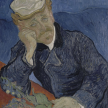




Comments
There are no comments for this story
Be the first to respond and start the conversation.